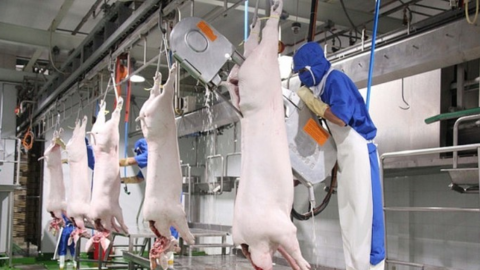
Modern slaughtering line of Dong Nai food processing factory
Referring to food production and processing industry, technology is not the first thing people often think of. But technology has changed the way food is produced and distributed through applications, robots, data and processing techniques.
There are currently 7.5 billion people in the world and that means the demand for food will be higher each year. Using modern technology to improve the way food is processed and packaged can improve both shelf life and ensure food safety and hygiene for people.
Robots and machines
Manufacturers use machines in food production to help ensure quality and reduce product costs. By using machinery, manufacturers will reduce both maintenance costs and labor resources, because machines will process fresh food faster, ensure uniform quality as well as increase productivity without over a lot of manpower. Using robots also helps manufacturers eliminate labor safety problems for humans in some dangerous activities.
A technology company launched a separate program for slaughterhouses in 2016, using robots to cut difficult-to-handle meat by hand, thereby reducing work risks this.
3D printing technology
3D printing technology is quite popular with many industries, among the food industry is no exception. A number of applications of “printing” food with this technology have been born, from NASA printing a pizza to hospitals using 3D printers to create soft foods for those who cannot chew hard food.
Some scientists are now experimenting with building food printers that can “cook” with oil and powdered capsules with a shelf life of up to 30 years. If successful, such a machine will not only minimize the environmental impact of cooking, but also become a form of sustaining survival for a world where the population is constantly growing.
Packaging and waste
Today, consumers are paying close attention to brands and ingredients that are harmful to the environment. As a result, many companies have applied new technologies to make their products “environmentally friendly.” By using robots and digitization technology, food industry companies have developed alternatives to plastic packaging. Many companies have applied new technology in the production of packaging, from edible packaging, micro packaging and even packaging against harmful bacteria to consumers.
According to some statistics, more than 30% of the world’s food is discarded every year. With the help of technology it is possible to reduce the amount of food that is wasted and make use of it as an additional food source. In the US, the Copia application connects businesses with food surpluses with humanitarian establishments in each locality or non-profit organizations wishing to make use of that food. The software also helps businesses manage and track the amount of food leftovers so that they will have solutions to save costs and reduce food waste.
Productivity and Quality Office